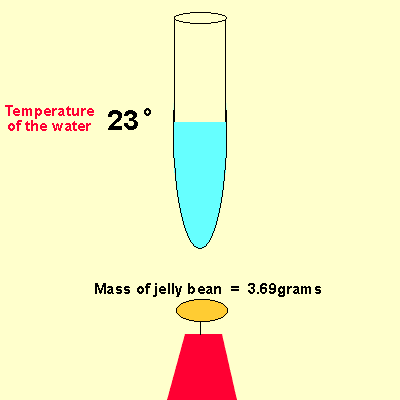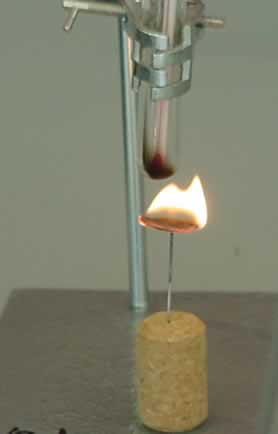Simple calorimeter
Specific heat of water
exercises

Solution
2)a) Look at
the animation above. A jelly bean is burnt and energy released to heat
the water. How much water is present in the test tube if the amount of
energy absorbed by the water is 0.789 Kilojoules.
b) The kilojoules per gram on the packet of the jelly beans above reads
2.58 kilojoules per gram instead of 1.97kilojoules per gram. Explain why?
Solution
3) 2.45 grams of a special type of confectionary was totally burnt in a well insulated container. 100 mls of water, present in the container, increased in temperature from 22.4°C to 24.6°C. Calculate the amount of energy per gram of confectionary.
Solution

4) Irene was asked to calculate the amount of energy per gram of an ice-cream stick. She set up the experiment as shown on the left.
80mls of water were placed in a test tube at a temperature of 22.7°C. 0.92 grams of the stick was burnt under the test tube as shown and the temperature rose to 32.6°C.
Calculate the amount of energy released per gram of wood.
Scan the picture on the left for the solution.
Would the result above be higher or lower than the real energy content per gram of wood? Explain.